Content from the Brookings Doha Center is now archived. In September 2021, after 14 years of impactful partnership, Brookings and the Brookings Doha Center announced that they were ending their affiliation. The Brookings Doha Center is now the Middle East Council on Global Affairs, a separate public policy institution based in Qatar.
The 1979 Iranian revolution had a cataclysmic impact on the region and 40 years since the Islamic Republic’s founding, the legacy of the revolution is still being debated. The emergence of the Islamic Republic represented what scholar Yitzhak Nakash described as the “surge of Shiism as a political force,” creating a sense of unease and uncertainty among Arab, Sunni-led autocratic regimes, and monarchs across the region. For decades, they had worked on cultivating foundational, pluralistic values and a unified identity to manage and engage their (at times) restive Shiite communities.
For some in those communities, including Shiite Islamist movements and activists, the revolution in Iran created a sense of opportunity, a chance to trigger their own, indigenous revolutions. In Iraq, Ayatollah Ruhollah Khomeini, the revolution’s chief architect, had spent 13 years exiled in the holy city of Najaf. Khomeini taught seminars and cultivated ties with students and religious scholars from near and far, as well as leading members of the Shiite clerical establishment in Najaf and Karbala.
It was while exiled in Iraq that Khomeini devised the intellectual and ideological framework that underpins Iran’s system of governance today. Known as velayat-e faqih, or rule of the jurist, it advocates direct and executive rule by Shiite clergy and constitutes the Iranian model of theocracy based on a jurisprudential interpretation of Islam. Its execution after the revolution represented a radical departure from Shiite Islam’s centuries-old tradition of separating religion from politics.
When the 1979 Iranian revolution unfolded, Iraq’s Shiite movement was in no position to emulate its co-religionists across the border. The failed uprising resulted in brutal repression for the Shiite community but it also shaped the state’s relationship with its Shiite community for decades to come, arguably setting the tone and conditions for other Shiite insurrections, including most notably during the 1990s.
The rise and fall of dawa
Khomeini was not the first to advocate clerical involvement in politics. Iraq’s Islamic Dawa Party—established in 1958—was the first modern Shiite Islamist party and movement, resulting in the creation of separate branches in other Arab countries with significant Shiite populations, such as Bahrain and Kuwait. Founding members of the party included the sons of the leading Shiite clergymen Grand Ayatollah Muhsin al-Hakim, whose modern-day equivalent in terms of stature in the clerical community would be Grand Ayatollah Ali Sistani.
 The party’s ideological founder, Mohammad Baqir al-Sadr, sought to develop an Islamic framework that aimed to reconcile Western-dominated modernity with classical Shiite thought but did not go as far as embracing what would become the Iranian model of theocracy. Bahraini and Saudi students were among the many foreign junior scholars following his teachings. Dawa founding members longed for a movement that was not defined along communal or sectarian lines and established the party on the basis of an ecumenical, intellectual, and Islamic revivalist outlook, one that drew inspiration from Egypt’s Muslim Brotherhood.
The party’s ideological founder, Mohammad Baqir al-Sadr, sought to develop an Islamic framework that aimed to reconcile Western-dominated modernity with classical Shiite thought but did not go as far as embracing what would become the Iranian model of theocracy. Bahraini and Saudi students were among the many foreign junior scholars following his teachings. Dawa founding members longed for a movement that was not defined along communal or sectarian lines and established the party on the basis of an ecumenical, intellectual, and Islamic revivalist outlook, one that drew inspiration from Egypt’s Muslim Brotherhood.
However, al-Sadr and the Dawa Party were targeted on two fronts. The Dawa Party was established from within Shiite clerical networks as a response to the ascent of the Iraqi Communist Party after the fall of the monarchy in 1958. Communism drew support from large sections of the Shiite population, including the relatives of leading Shiite clerical figures. While the party was viewed with caution by the regime in Iraq, during its formative years it was actually from within the Shiite religious establishment in Najaf that the party suffered its first major hit.
Just as the party started to gain traction and popularity, the clerical establishment pushed back against the formation of a Shiite Islamist movement that looked to engage politics and power structures, warning that this violated the centuries-old quietist tradition of Shiite Islam and could provoke a dangerous response from the state against the hawza or religious seminaries. Critics of Dawa and al-Sadr launched a smear campaign against the cleric and mobilized enough support to force al-Sadr’s retreat from the party.
Indeed, tensions over the extent to which the Shiite clergy should involve themselves in politics and governance were central to the thorny relations Khomeini developed with leading quietist clerics in Najaf while in exile, including Grand Ayatollah Abu al-Qasim al-Khoei. And these same frictions have loomed large in the rivalry between Najaf and Iran’s holy city of Qom since the revolution in 1979. Today, Grand Ayatollah Sistani, al-Khoei’s student, has continued the quietist tradition and has assiduously protected Najaf from velayat-e faqih, despite Iran’s best efforts.
Dawa took another major hit after the Baath Party came to power in 1968, which also targeted the mobilizing capacity of the Shiite religious establishment, particularly after Grand Ayatollah Muhsin al-Hakim’s death in 1970. By the time the Iranian revolution had unfolded, Dawa had already been forced underground and had lost many of its members and supporters, who were imprisoned, killed, and forced into exile.
A failed revolution
Still, although dilapidated and distressed, the broad-based, loosely organized Shiite Islamist movement that had emerged in Iraq since 1958—comprised as it was of Dawa Party supporters, members of Iraq’s Shiite clerical networks, and ordinary members of the Shiite community—saw its own opportunity in 1979.
In the aftermath of Iran’s revolution, Iraq’s Shiite community called on Mohammad Baqir al-Sadr to be their “Iraqi Ayatollah Khomeini” and to lead a revolt against the regime. Community leaders, tribal heads, and hundreds of ordinary members of the public paid their allegiance to al-Sadr. Protests then erupted in Baghdad and the predominantly Shiite provinces of the south in May 1979. Every Friday, Iraqis from across Baghdad and the southern Shiite-dominated provinces visited al-Sadr in his home in Najaf to declare their allegiance and readiness to support the revolution.
For nine days, protests against the regime unfolded, but were then suppressed by the regime, which arrested al-Sadr. The cleric’s imprisonment led to another wave of protests in June after a seminal, powerful appeal from al-Sadr’s sister, Bint al-Huda, a preeminent activist in her own right and icon of Islamic feminism. Further clashes unfolded between the security forces and protestors. Najaf was put under siege. The magnitude of the violence was such that the regime released al-Sadr, concurrently repressing his representatives and supporters to diminish the cleric’s network and the mobilizing capacity of the protestors. Thousands were tortured and executed.
The Dawa Party and Iraq’s Shiite movement was in no position to emulate the revolution in Iran. For starters, the party was fragmented and lost much of its initial leadership to Baath repression when events in Iran unfolded, meaning it lacked strategic direction and organization. Dawa leaders had either fled the country or were imprisoned and killed by the regime. Indeed, in the years after the revolution, the Dawa Party in its literature conceded how costly and disastrous the uprisings were. A failed assassination attempt in 1980 on the then-deputy prime minister, Tariq al-Aziz, resulted in the regime’s torture and execution of al-Sadr and his sister, Bint al-Huda. Baath repression after 1979 depleted the party’s resources and capacity to mobilize against the regime, forcing it to rely on intermittent, usually unsuccessful insurgent attacks.
Unlike their Iranian co-religionists, Iraq’s Shiite community lacked the active participation of other sections of society, including other groups such as the Kurds or Arab Sunnis. In other words, the protests failed to reach critical mass. There was sympathy toward the Shiite cause from Kurdish revolutionaries in the north, given their historically close relationship and coordination, but the Kurds were confined to the mountains and engulfed in their own war against the regime. Others adopted the regime’s anti-Shiite polemics, dismissing Shiite activism as sectarian or part of an Iranian conspiracy. In this respect, the Iranian revolution had a negative, polarizing impact on sectarian relations.
The Baath regime itself was aware of this shortcoming. In records captured by the United States after the 2003 invasion, its senior leadership, including Saddam Hussein himself, pointed out that Khomeini was “riding the wave of the revolution” and “national, regional and international political events interacted to let Khomeini take hold of the revolution and access the power.” Unlike in Iran, Iraq’s Shiite religious establishment was also severely weakened in the decades before 1979 and had nowhere near the similar numbers of clerics and seminary students as Iran’s religious establishment enjoyed. By the time the revolution unfolded, Iraq’s Shiites were lacking the structural conditions for a successful revolution.
“the first islamic revolution”
While the failed revolution may have resulted in brutal repression and regret, it shaped the state’s relationship with its Shiite community for decades to come, arguably setting the tone and conditions for other Shiite insurrections, including most notably during the 1990s. The collective victimhood and memory generated by the post-1979 events also resulted in a distinctly Iraqi form of Shiite rebellion, which forms part of the Iraqi narrative of nationalism and patriotism today.
Indeed, it would be wrong to entirely attribute the 1979 protests in Iraq to events in Iran. As scholar Michelle Browers explains, discourses of reform and resistance characterized Iraq’s Shiite community long before the 1979 Iranian revolution. What unfolded in 1979 was a national Iraqi affair years in the making, enabled as it was by the activism of the Dawa Party and the Shiite religious establishment. In fact, the little-known seminal protests in 1977 known as the Safar Intifada (Safar being the second month in the Islamic calendar) erupted after the regime attempted to ban Shiite religious processions. It was also aimed at toppling the Baath regime and was also met with a brutal crackdown. Shiite activists refer to the protests of 1977 as “the first Islamic revolution, the one that came before the one in Iran.”
The Brookings Institution is committed to quality, independence, and impact.
We are supported by a diverse array of funders. In line with our values and policies, each Brookings publication represents the sole views of its author(s).

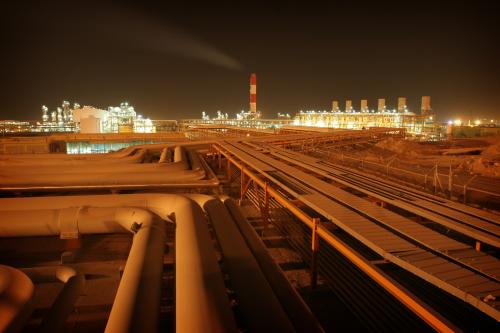
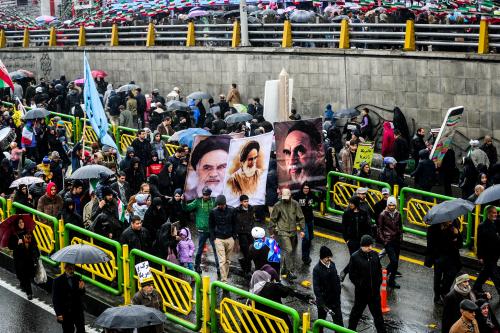
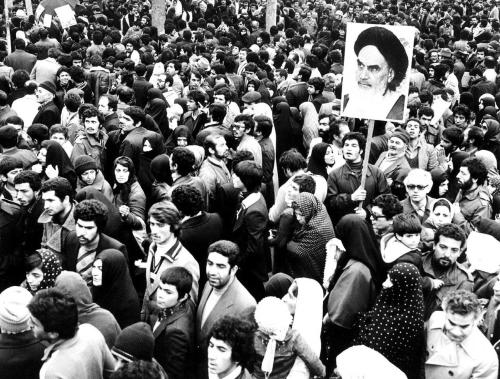

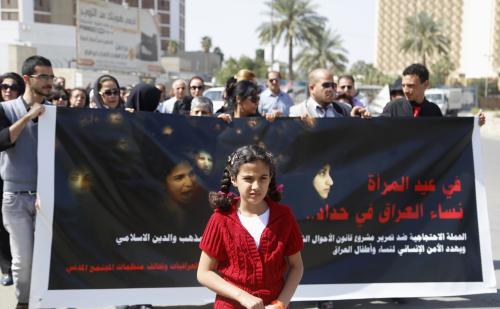
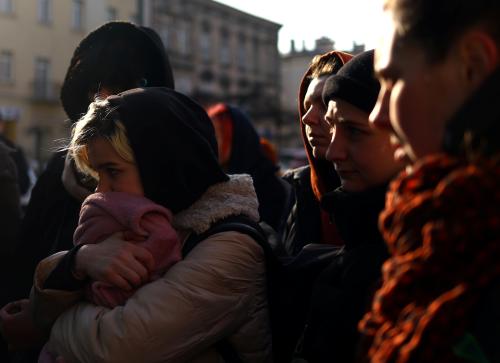
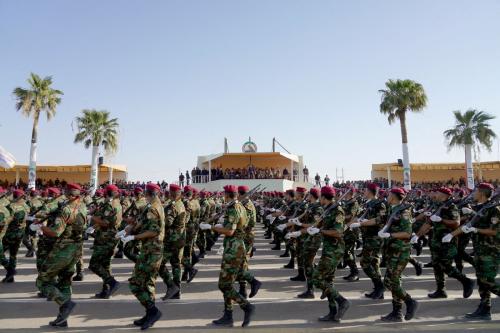
Commentary
Iraq’s failed uprising after the 1979 Iranian revolution
March 11, 2019